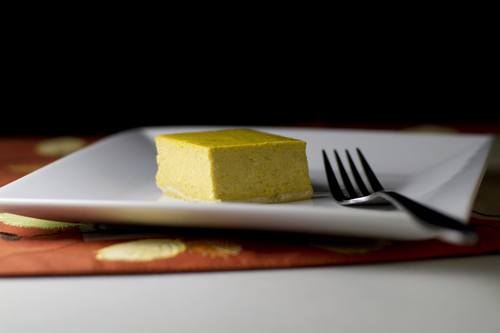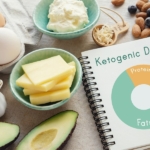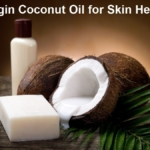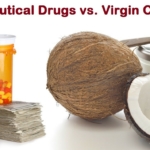By Sarah Shilhavy
Health Impact News
Cheesecakes are a classic dessert, with many different flavor variations and types. For those on a gluten free diet, finding a 100% gluten free cheesecake recipe that doesn’t skimp on flavor or texture, and still blows you away, can be a bit of a challenge. Many popular cheesecakes like the New York style use a bit of flour in the filling, and the classic graham crust is hard to replace. Even though gluten free grahams are available to purchase, they are loaded with highly processed ingredients and are better off not being touched. Meanwhile, the alternative, making them yourself, is extremely time consuming.
There is however, a very easy solution: make a shortbread crust and nix the gluten flours. Shortbread crusts are light, buttery, very quick and easy to make, and compliment any flavor of cheesecake. Here’s how you make one:
- Use a combination of flours
While you may have a favorite, go-to gluten free flour, it almost always takes 2-4 different flours to correctly mimic gluten characteristics.
- Add a starch
Many gluten free flours have a slight coarse texture to them, and adding a silky starch helps cut down on the harsh bite. Try tapioca, potato, or organic cornstarch.
- Mix well
One thing many don’t realize about working with gluten free flours is that over mixing is almost impossible. There is no gluten to “glutenize” and make the dough or batter bond and become stiff or rock hard from over mixing, so mix away.
- Use fine flour in the filling
If the cheesecake filling calls for flour, use one or two different types that are very fine in texture. However if the amount called for is less than 4 tablespoons, you’ll be very safe just ignoring that step and leaving it out altogether.
Additionally, here are a few cheesecake pointers to keep in mind:
- Follow the recipe as written. If you decide to substitute this for that and use that thing instead of the original thing and it explodes, I claim no responsibility for that.
- Have all filling ingredients at room temperature, especially all dairy products, eggs and pumpkin. The warmer those ingredients are, the easier the batter will mix and become silky smooth.
- Use a paddle attachment, if you have one. It won’t whip air into the batter as much, and thus avoid over mixing.
- Mix just until combined. Don’t let the mixer keep running if everything is already well blended, and try to keep it on a low setting because high speed = air, and air = tiny little bubbles that will cause the cake to crack during baking. Basically, air + cheesecake = not good.
The recipe below should be a hit with both those who like and dislike pumpkin. It has just enough pumpkin to keep the fans happy, but not enough for it to be overwhelmingly pumpkin-y. When you bite into it, you get just a hint of spice and subtle pumpkin laced throughout the silky, creamy, dense cheesecake.
If you’re still a little lost or uncertain about making this, the video will take you through it in a step-by-step process, and you’ll also get to see all the guidelines in use.
Creamy Pumpkin Cheesecake Bars
Servings: 20
Preparation Time: 10 minutes
Filling:
- 3 (8 ounce) packages cream cheese
- 1 scant cup organic sugar
- 3/4 teaspoon cinnamon
- 1/4 teaspoon nutmeg
- 1/2 cup sour cream
- 2 teaspoons vanilla extract
- 3 eggs
- 15 ounces pumpkin puree
Gluten Free Shortbread Crust:
- 1/2 cup butter
- 1/4 cup sugar
- 2 tablespoons coconut flour
- 1/4 cup + 2 tablespoons corn starch
- 1/2 cup brown rice flour
Preheat oven to 350° F. Lightly grease a 9×13 pan with coconut oil.
For the shortbread, cream the butter and sugar until well blended. Add flours and mix well. Dust fingers with cornstarch and press into prepared pan evenly.
Beat cream cheese, sugar, cinnamon and nutmeg in the bowl of an electric mixer just until well blended and creamy. Add sour cream and vanilla, blend well. Mix in eggs and add pumpkin. Do not overbeat and try not to whip air into the batter.
Pour filling into pan and bake for 40-45 minutes. Top should still jiggle slightly when you shake the pan.
Recipe courtesy of Sarah Shilhavy




 How the Simple High-Fat Low-Carb Ketogenic Diet Continues to Change People's Lives
How the Simple High-Fat Low-Carb Ketogenic Diet Continues to Change People's Lives New Studies Continue to Show that Coconut Oil is the Best Oil for Treating Skin Conditions and Maintaining Healthy Skin and Teeth
New Studies Continue to Show that Coconut Oil is the Best Oil for Treating Skin Conditions and Maintaining Healthy Skin and Teeth New Study Confirms Health Benefits of Coconut Oil and USDA False Claims Against It
New Study Confirms Health Benefits of Coconut Oil and USDA False Claims Against It The FDA has NOT Banned Trans Fats! Traditional Saturated Fats like Coconut Oil Continue to Shine for Alzheimer's Disease but are Condemned by U.S. Dietary Advice
The FDA has NOT Banned Trans Fats! Traditional Saturated Fats like Coconut Oil Continue to Shine for Alzheimer's Disease but are Condemned by U.S. Dietary Advice The Evidence of Coconut Oil's Superiority Over Drugs in Destroying Pathogens Continues to be Published in Peer-Reviewed Journals
The Evidence of Coconut Oil's Superiority Over Drugs in Destroying Pathogens Continues to be Published in Peer-Reviewed Journals